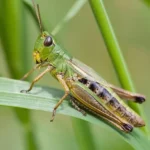
Bees are winged insects related to wasps and ants that are known for their pollination and in the production of honey. A bee’s body, like all insects, is divided into three parts: a head with two antennae, a thorax with six legs, and an abdomen. Every bee has branched hairs on their bodies and two pairs of wings. Stingers are only found in female bees (which are modified ovipositors, organs originally used to lay eggs). Many bee species are black and yellow, but many are not—they come in a variety of colors, including green, blue, red, and black. Some are striped, while others have a metallic sheen. They range in size from large carpenter and bumble bees to the tiny Perdita minima bee (less than two millimeters long).
A bee has five eyes.
Because bees are insects, they have six legs.
Drones are male bees in the hive.
Bees fly at about 20 miles per hour.
Worker bees are female bees in the hive (except the queen).
The average number of eggs laid by a queen per day is 2,000.
A bee will die if its stinger is lost.
Bees have been around for about 30 million years!
Pollen baskets, or corbicula, are pollen baskets carried by bees on their hind legs.
A typical beehive can house up to 50,000 bees.
To make one pound of honey, foragers must collect nectar from approximately 2 million flowers.
In her lifetime, the average forager produces about 1/12 teaspoon of honey.
In the United States, the average per capita honey consumption is 1.3 pounds.
Bees have two sets of wings.
Pheromones are chemicals that honey bees use to communicate with one another.
Bees are important pollinators of approximately 130 agricultural crops in the United States, including fruit, fiber, nut, and vegetable crops.
Bee pollination contributes approximately 14 billion dollars per year to increased crop yield and quality.









